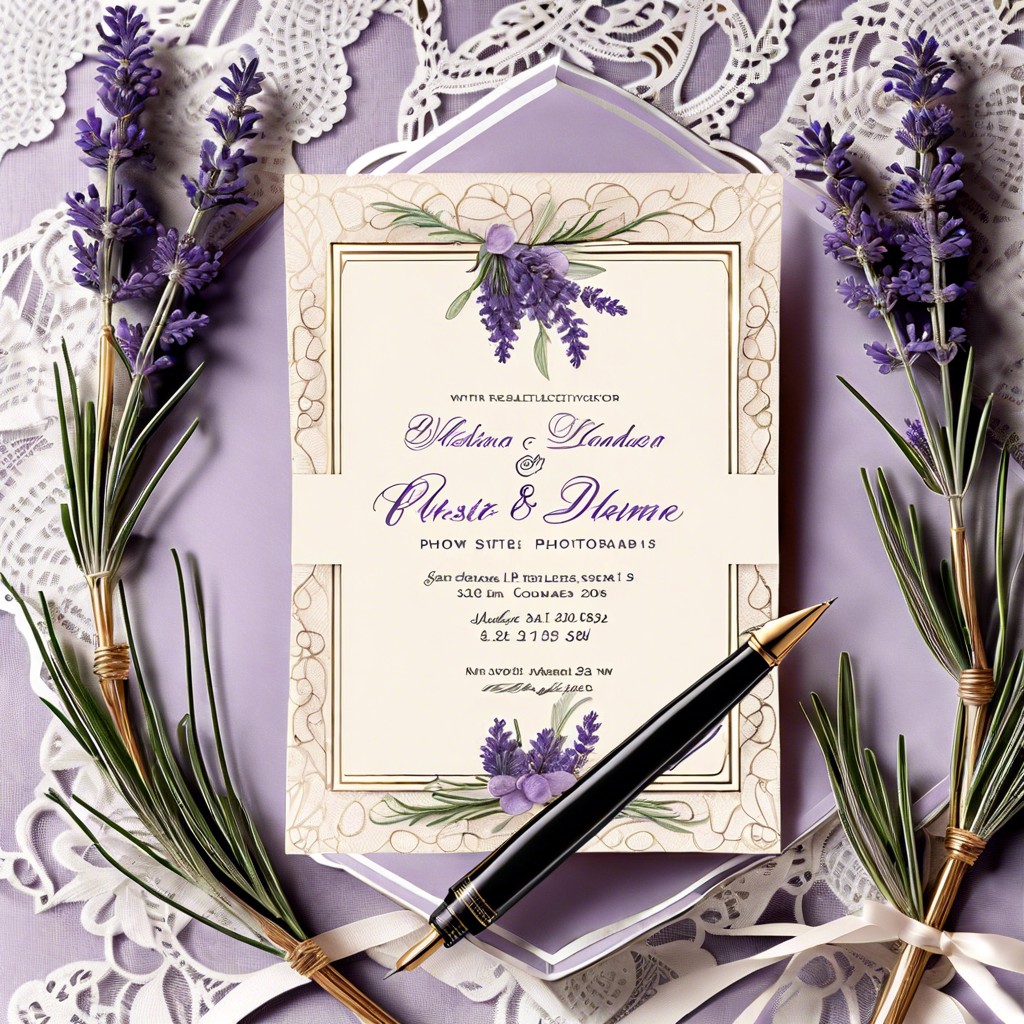Sending out wedding invitations at the right time is crucial for ensuring your guests can attend; this article provides clear guidelines on scheduling those invites.
Key takeaways:
- Send traditional invitations 6-8 months before the wedding.
- Order extra invitations for last-minute additions or mistakes.
- For destination weddings, send invitations 3 months prior.
- Set the RSVP deadline 4-6 weeks before the wedding.
- Follow proper etiquette when deciding who receives an invitation.
Wedding Invitations: TIMELINE: 6-8 MONTHS BEFORE THE WEDDING

Begin the invitation process well ahead of your wedding date to allow for a seamless coordination and ample response time from guests. Follow this timeline for traditional invites:
1. Selection and Design: Six to eight months prior, select your invitation design and stationer. Consider your wedding theme, color scheme, and formality level to ensure a consistent style.
2. Assembling & Proofreading: Allow several weeks for assembly and proofreading. Double-check details such as date, time, and venue for accuracy.
3. Addressing Invitations: Collect guest addresses and decide on formal or informal address styles. Consider hiring a calligrapher for an elegant touch.
4. Order Extra Invitations: Always order a few extras to account for last-minute additions or mistakes during addressing.
5. Mailing: Aim to mail invitations six to eight months out for a destination wedding, or at least six months prior for domestic weddings with many out-of-town guests. This provides guests with plenty of time to arrange travel and accommodations.
6. Save-the-Dates: For added courtesy, send out save-the-date cards even earlier if many attendees are traveling or if the wedding coincides with a busy season or holiday.
Destination Wedding Stationery
For nuptials taking place far from home, consider a longer lead time. Guests will need ample opportunity to book travel and accommodations. Aim to send invitations for a destination wedding about three months prior to the event.
Keep in mind the following:
- Include travel information: Details about the location, nearby airports, accommodation options, and a rough itinerary can be highly beneficial.
- Consider a save-the-date: These should be sent around nine to twelve months in advance, particularly for international destinations. This pre-invitation notice can help guests start planning and save for the trip.
- Be detailed: Since guests may be less familiar with the area, provide as much information as possible to facilitate their arrangements, maybe even a suggested packing list or expected weather conditions.
- Travel agent contacts: If you’ve arranged for a travel agent to handle bookings, include this information for streamlined planning.
- RSVP time frame: Set the reply by date a bit earlier for a destination wedding to allow more time for you to finalize the headcount and logistics with vendors.
Reply By Date: TIMELINE: 4-6 WEEKS BEFORE THE WEDDING
Selecting a reply by date is crucial for finalizing your catering and seating arrangements. Ideally, this date should be set 4-6 weeks before your wedding. This window allows guests enough time to check their schedules and make necessary travel arrangements, while also giving you ample time to chase any late responses.
Consider the following points to ensure a smooth RSVP process:
- Coordinate with your vendors to confirm the latest possible date they need your final headcount.
- Include a clearly marked deadline on the RSVP card.
- Offer multiple reply options, like mail, email, or a wedding website, to make it easy for guests to respond.
- Be prepared to follow up with guests who miss the deadline to ensure an accurate count for your big day.
Etiquette: WHO RECEIVES AN INVITATION
Navigating the guest list can be a daunting task, but adhering to etiquette can ease the process:
- Immediate family members are at the top of the list, including parents, siblings, and grandparents.
- Extend invitations to your bridal party, including all bridesmaids and groomsmen, as a gesture of appreciation for their support.
- Consider relatives beyond the immediate circle, such as aunts, uncles, and cousins, depending on the closeness of your relationship and wedding size.
- Friends should be next, taking into account the length and significance of the friendship. Prioritize those who have played a meaningful role in your life.
- If plus-ones are within your budget, it’s courteous to invite spouses, fiancé(e)s, and live-in partners of your invited guests.
- Co-workers can be included based on your interpersonal relationships and whether you have the space and budget.
- Remember, you’re not obligated to invite everyone. Aim for a guest list that reflects your most valued relationships and fits your venue and budget. Avoid feeling pressured to invite individuals due to expectations or social obligations.
Wedding Invitation Timeline
Begin planning your invitation suite 9-12 months before the wedding to account for design and printing time. Aim to have all your stationery in hand at least 4 weeks before the intended mailing date.
For a local wedding, mail invites 6-8 weeks prior. This gives guests enough time to clear their schedules, make travel arrangements if necessary, and respond by the RSVP date.
If you’re having a destination wedding, send out invites 3 months in advance to allow for more complex travel plans.
Save-the-date cards can go out 6-12 months beforehand, especially beneficial if many guests will be traveling. This pre-invitation communication helps to ensure they can attend.
Track RSVP deadlines carefully. Set the RSVP date for 4 weeks before the wedding day to finalize guest counts and catering details.
As a best practice, order a few extra invitations for any last-minute guests and as keepsakes.



